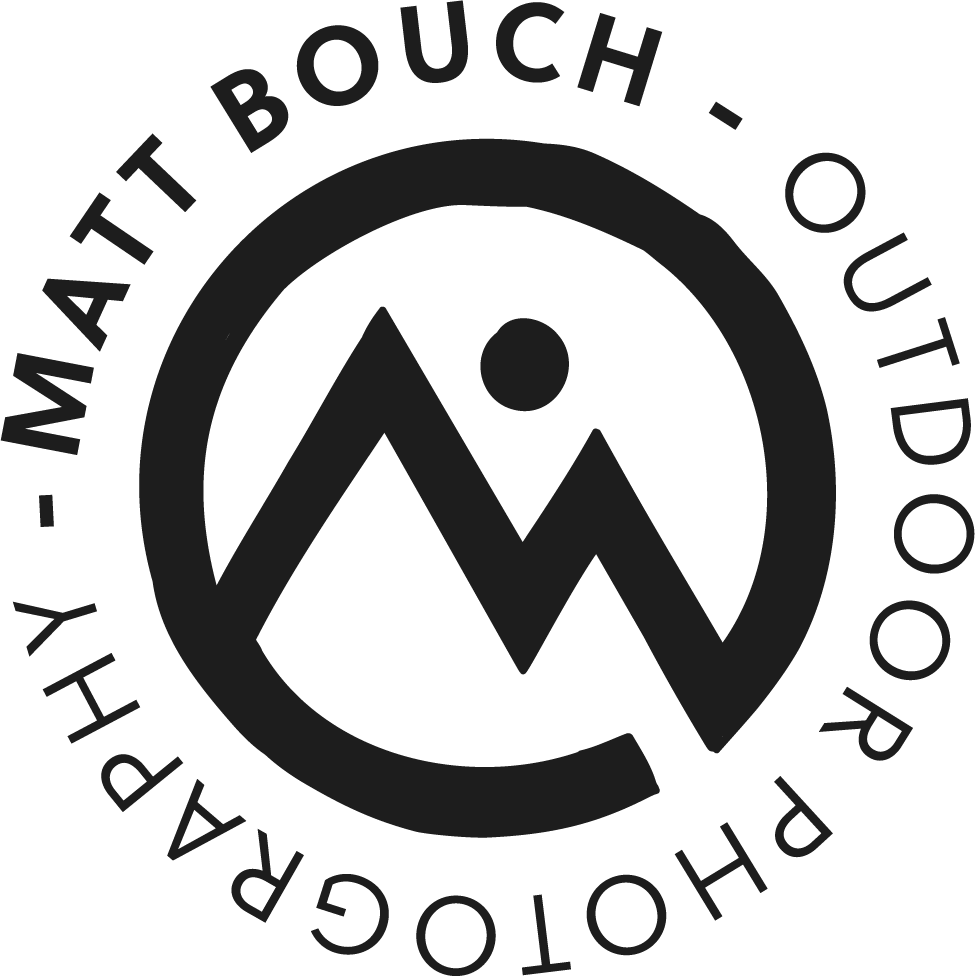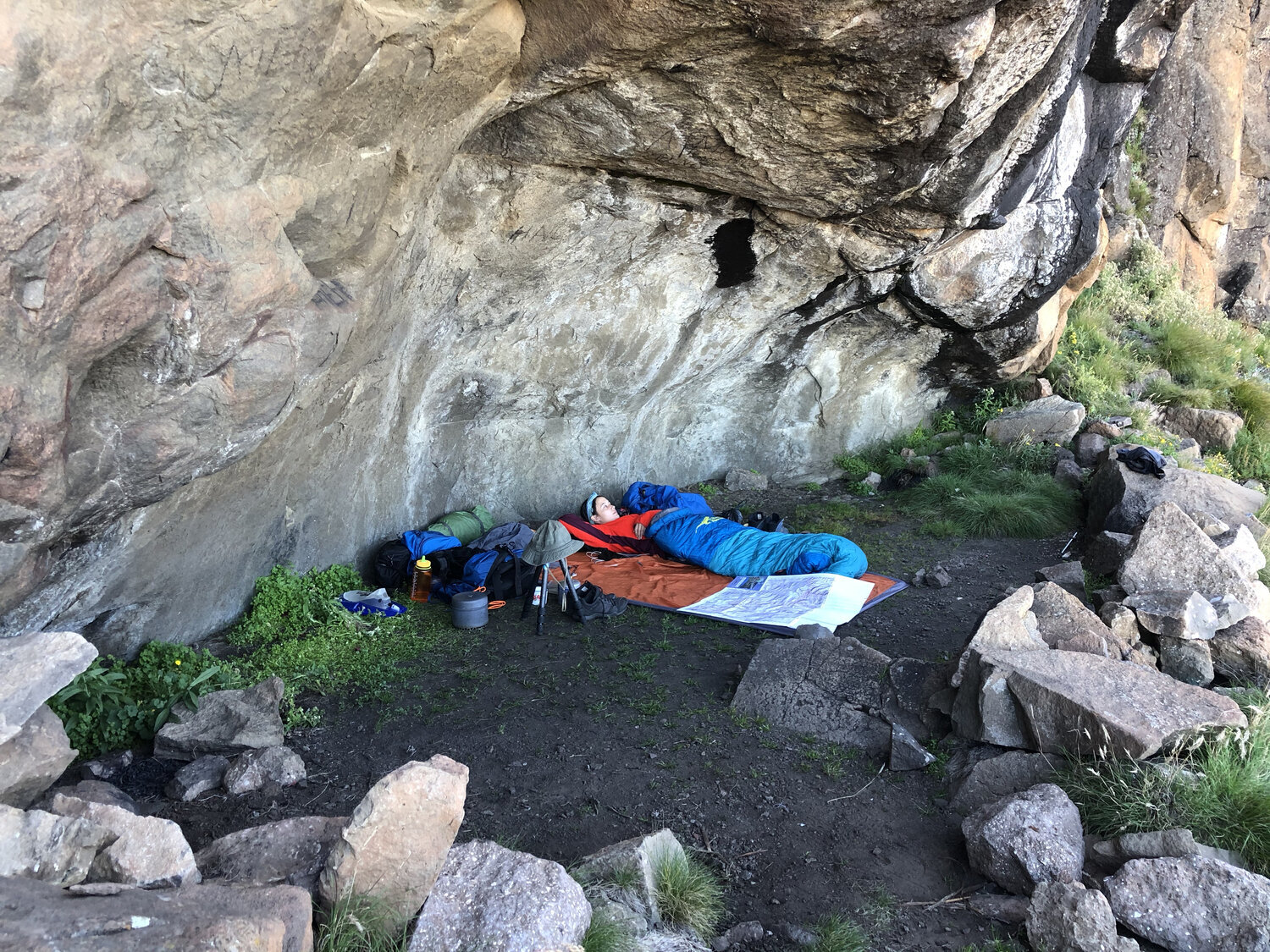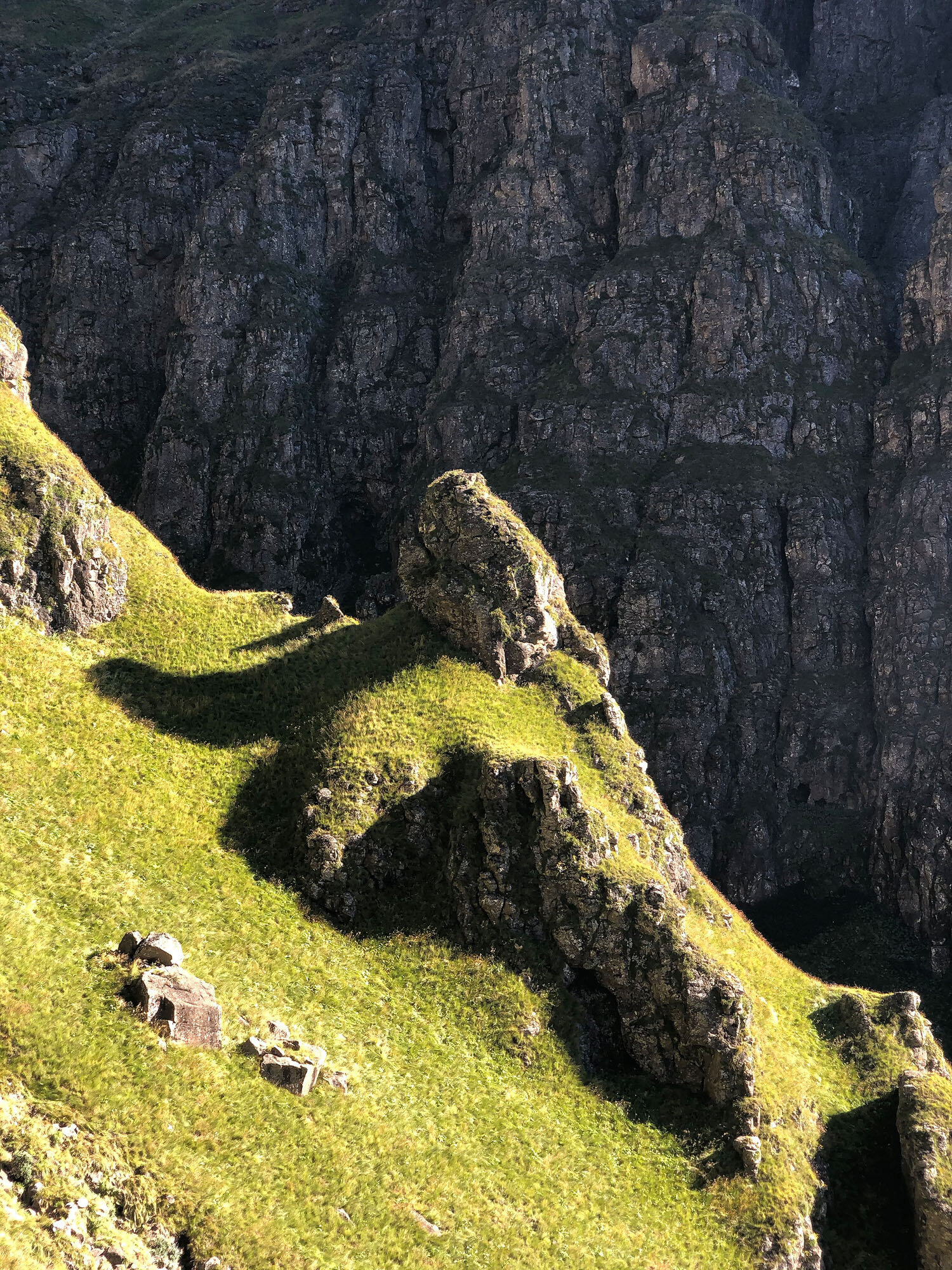How To Hike To Mponjwane Cave
Mponjwane Cave is a well-sheltered overhang in the Northern Drakensberg, most directly accessed via Rockeries Pass. With its upper and lower annexes, the Mponjwane Cave provides comfortable shelter for groups of up to 10 people (Depending on how tightly you squeeze). For photographers, the cave is a front-row seat to the mighty Mponjwane Tower, and watching the sunrise behind this sheer slab of rock is a sight to behold. This is one of my favourite caves to spend the night in, and in the post to follow I’ll explain how to get there.
PLEASE READ THIS FIRST:
Always hike within your limits. Weather can change rapidly and be life-threatening. Always carry warm and waterproof clothing, sufficient food and water, a map, a charged cellphone, a headlamp and a basic first aid kit. Ensure the entire group has the relevant emergency numbers for the area you are hiking in. These are the people you call for help: not your mom, sister, or best friend. All distances and elevations are approximate, based on tracking with my Garmin watch. Times have not been included due to vast variations caused by fitness levels, weather, trail conditions. DO NOT solely rely on GPS navigation. Ensure you have a 1:50 000 topographical map, and the knowledge to use it.
Summary of Distances
Mnweni Cultural Centre to the trailhead: 5.97km. 208m elevation gain.
The trailhead to the base of Rockeries Pass: 6.62km. 602m elevation gain.
Base to the summit of Rockeries Pass: 3.51km. 779m elevation gain.
Summit of Rockeries Pass to Mponjwane Cave: 1.10km. 192m elevation gain.
Getting to Rockeries Pass
Mponjwane Cave is most easily accessed via Rockeries Pass, which in my opinion, is one of the easier passes to ascend. That said, a decent level of fitness is called for, especially when carrying a multi-day backpack. The hike up Rockeries Pass starts at the Mnweni Cultural Centre, which is about 5km away from the actual trailhead. You can walk this section, but it’s a bit of a slog along a gravel road. A better option is to get a lift up in a local bakkie or taxi. This is can be arranged by asking at the cultural centre. Budget about R100 for this trip.
Finding camp at the base of Rockeries Pass
With an early start and a fast pace, the hike from Mnweni Cultural Centre to Mponjwane Cave via Rockeries Pass can be done in one day. But it will be a very long day. If you prefer a more leisurely hike, the base of Rockeries Pass provides a great campsite. Camping here would be my recommendation. You will find the campsite directly on the path, at the point where the Nquaza Pass and Rockeries Pass converge. Between the grassy tufts and small robust trees, there’s space for 4-5 tents. You may notice small fire pits dotted around the campsite. These are likely made by local shepherds. Please do not make any fires here.
Ascending Rockeries Pass
From the campsite, the trail up Rockeries Pass is clear. It is well walked, and once you’re on the pass, losing your way is unlikely. About halfway up you will cross a stream. Fill your bottles here, as in most months there is no water in the immediate vicinity of the Mponjwane Cave. There are streams on escarpment toward Mnweni Pass, but they require a bit of a walk. Though only 3km long, the Rockeries Pass trail is uneven and eroded, with sections of loose rock and steep inclines. Allow 3 hours of hiking at an easy pace to reach the top.
Finding Mponjwane Cave
However, once atop the escarpment, finding the Mponjwane Cave can prove tricky, particularly in poor weather. After summiting Rockeries Pass, continue straight ahead for approx 200m from the cairn at the top of the pass. To your right, there is a large hill. Mponjwane Cave is on the opposite side of the hill, with the opening in a northerly direction. A faint footpath leads up the hill and is dotted with cairns. The path ascends steeply, and loops gently outward to the right, before easing and looping left toward the front of the hill. At times the path wains and is tough to see, so look ahead for the cairns. Unlike other caves in the area - Ledgers for example - the final approach is wide and easy to walk. The large Mponjwane Cave is a welcoming sight.
About the Mponjwane Cave
The Mponjwane Cave has two sections: an upper and lower, each big enough to pitch a tent inside. The lower section is partially sheltered by a man-made rock wall. In wet months, it is preferable to either pitch a tent inside the cave or to use a tarp or divvy to protect your sleeping back from moisture that can blow in. There is a resident mouse, so keep your food stashed inside your bag at night. And as with the Rockeries Pass campsite, please don’t make any fires in the cave, and remove all your litter - including fruit peels.
Steph getting comfortable in the lower section of Mponjwane Cave.
The smaller, upper section of the Mponjwane Cave.
A view from Mponjwane Cave. You can see me on the ridge line, with Mponjwane behind. Image: Steph Rous
Photographing Mponjwane Tower and surrounds.
The Mponjwane Tower is the most obvious photographic subject. From the cliff edges above and slopes on all sides, you will find plenty of other subjects to photograph as well: North Peak, The Bell, the Mnweni Needles, Rockeries Pass. One of my personal favourites is the view down toward the Mnweni Cutback. With a low inversion tumbling in the valleys below, this is a bucket list location. Be sure to bring a telephoto lens to make the most of this area.
The way back down.
As with the ascent, Rockeries Pass will be your most direct route down the mountain. Usually, I aim to leave the cave before 08h00 and at a leisurely pace arrive at the gravel road by 13h00. My advice is to arrange to be picked up at the trailhead with the same vehicle that dropped you off. Schedule this for 14h00. This allows some wiggle room for longer lunch breaks and tired legs. A lift back to the Mnweni Cultural Centre from the trailhead is even more important than a lift there. Every minute you spend walking the gravel road is a minute you could have spent at the Harrismith Wimpy tucking into a well-deserved burger.
It’s a long road back to the Mnweni Cultural Centre. Better to get a lift.
I hope you find this article helpful. Leave me a comment with any questions or feedback. If you would like to book a guided photography trip, feel free to contact me.








